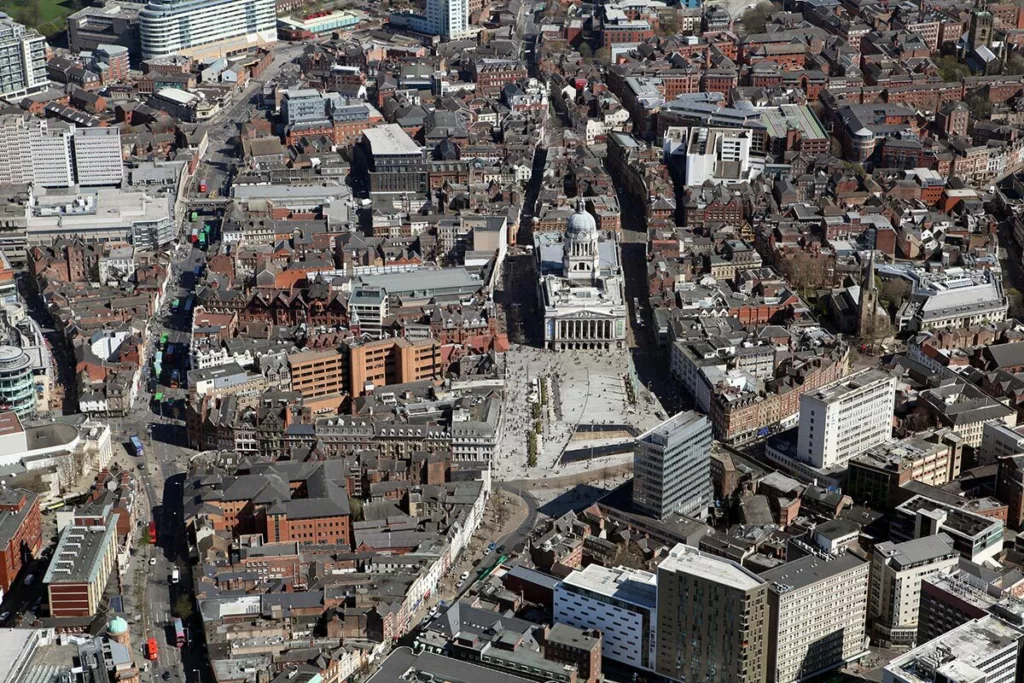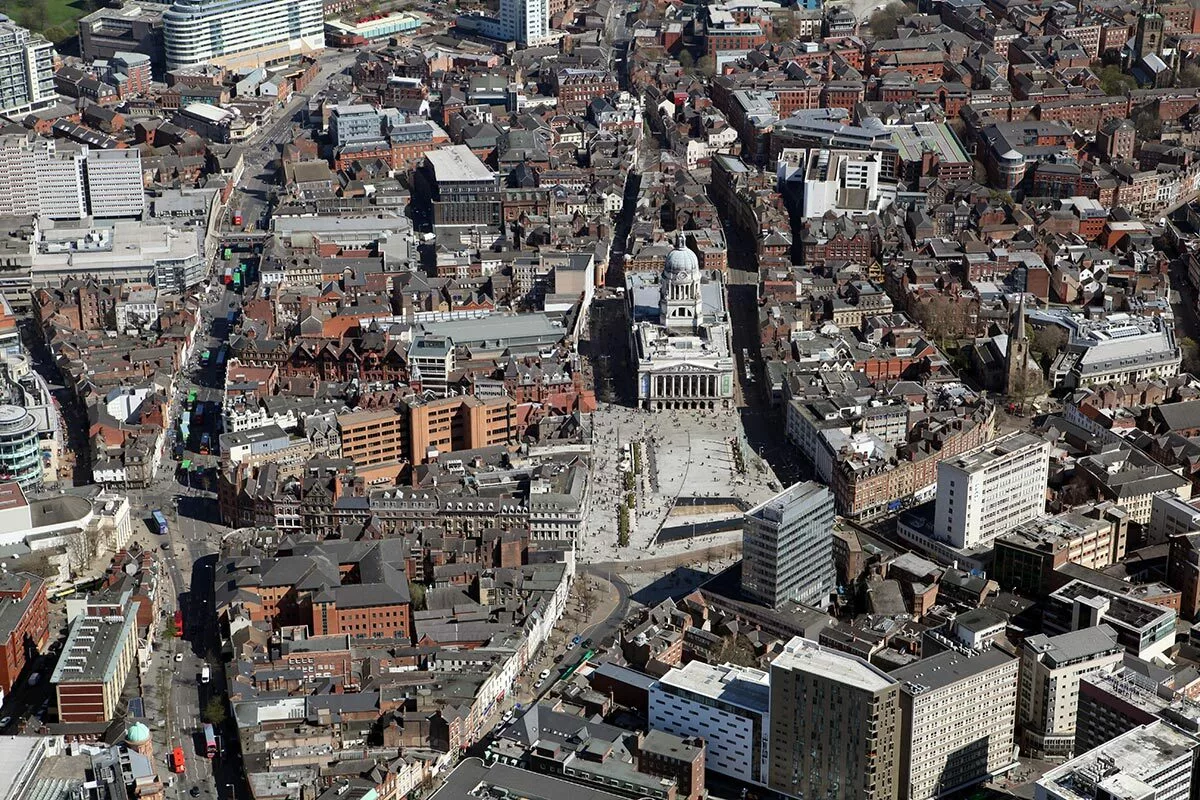Summary
its universities and notable figures serve as a testament to the city’s enduring commitment to academic and cultural brilliance.

Nottingham, a historic city nestled in the East Midlands of England, stands tall as a beacon of academic excellence and cultural heritage. With two illustrious universities—the University of Nottingham and Nottingham Trent University—the city has cultivated an environment where intellect and creativity flourish. This article delves into the rich academic landscapes of these institutions and the lives of notable scientists and writers who have called Nottingham home.
The University of Nottingham: A Legacy of Research and Innovation
Founded in 1881 as University College Nottingham, the University of Nottingham has grown into a world-renowned institution, securing its place among the esteemed Russell Group of research-intensive universities. Its Royal Charter, granted in 1948, marked the beginning of a journey towards becoming a global leader in education and research.
Campuses and Facilities:
The University of Nottingham boasts several campuses, each with a unique character and focus:
- University Park Campus: The flagship campus, set in 300 acres of rolling parkland, is often hailed as one of the most beautiful in the UK. It hosts the majority of the university’s schools and departments, alongside extensive research facilities and student accommodations.
- Jubilee Campus: Known for its striking modern architecture and commitment to sustainability, Jubilee Campus is a hub for business, education, and computer science. The campus’s innovative design has won multiple architectural awards.
- Sutton Bonington Campus: Situated in the Leicestershire countryside, this campus specializes in biosciences and veterinary medicine. It includes state-of-the-art laboratories, a working farm, and extensive research facilities.
Notable Alumni and Faculty:
Among the distinguished individuals associated with the University of Nottingham, Sir Peter Mansfield stands out. A Nobel Prize-winning physicist, Mansfield’s work on Magnetic Resonance Imaging (MRI) at the university revolutionized medical diagnostics. Born in 1933 in London, Mansfield pursued his higher education at the University of London before making Nottingham his academic home. His research at Nottingham’s Department of Physics led to the development of MRI, earning him the Nobel Prize in Physiology or Medicine in 2003.
Another eminent figure linked to the university, albeit in a different capacity, is D.H. Lawrence. Though not an alumnus, Lawrence attended adult education classes at University College Nottingham. Born in Eastwood, Nottinghamshire, in 1885, Lawrence’s literary works, including “Sons and Lovers” and “Women in Love,” reflect his Nottinghamshire roots and his complex relationship with industrial and rural England.
Nottingham Trent University: Bridging Academia and Industry
Nottingham Trent University (NTU) has a history dating back to 1843 when it was established as the Nottingham Government School of Design. It achieved university status in 1992 and has since become known for its emphasis on practical education and strong industry ties.
Campuses and Facilities:
NTU operates several campuses, each tailored to specific academic disciplines:
- City Campus: Located in the heart of Nottingham, the City Campus features the iconic Newton Building and offers a wide range of courses, from law and business to art and design.
- Clifton Campus: This campus, set on the outskirts of the city, focuses on science and technology, arts and humanities, and education. It boasts cutting-edge laboratories and collaborative learning spaces.
- Brackenhurst Campus: Situated in the Nottinghamshire countryside, Brackenhurst specializes in animal, rural, and environmental sciences. The campus includes a working farm, equestrian center, and expansive gardens and woodlands.
Notable Alumni:
NTU has produced many notable alumni who have excelled in various fields. Matt Berry, an actor and comedian celebrated for his roles in “The IT Crowd” and “What We Do in the Shadows,” studied contemporary arts at NTU. Another distinguished graduate is Simon Starling, a Turner Prize-winning artist known for his conceptual art and installations.
Nottingham’s Scientific Pioneer: Sir Peter Mansfield
Sir Peter Mansfield’s journey from a young boy in London to a Nobel laureate in Nottingham is a story of relentless curiosity and groundbreaking discovery. Born on October 9, 1933, Mansfield’s early education was interrupted by World War II, but his fascination with science persisted. After completing his studies at the University of London, Mansfield joined the University of Nottingham, where he made his most significant contributions.
Career and Achievements:
At Nottingham, Mansfield’s pioneering research in nuclear magnetic resonance (NMR) led to the development of MRI technology. This non-invasive imaging technique revolutionized medical diagnostics, allowing for detailed visualization of internal structures without harmful radiation. Mansfield’s work earned him numerous accolades, culminating in the Nobel Prize in 2003, shared with Paul Lauterbur.
Life in Nottingham:
Mansfield’s connection to Nottingham was profound. He spent decades at the University of Nottingham, nurturing the next generation of physicists and continuing his research. Even after his retirement, Mansfield remained an active figure in the academic community until his death in 2017. His legacy lives on in the university’s research facilities and in the countless lives saved and improved by MRI technology.
The Literary Giant: D.H. Lawrence
David Herbert Lawrence, better known as D.H. Lawrence, is one of Nottinghamshire’s most celebrated literary figures. Born on September 11, 1885, in Eastwood, Lawrence’s early life in a coal mining family profoundly influenced his writing.
Early Life and Education:
Lawrence attended Nottingham High School and briefly enrolled in classes at University College Nottingham. These formative years in Nottinghamshire provided the backdrop for many of his works, which often explored the tensions between industrial and pastoral life.
Career and Achievements:
Lawrence’s novels, including “Sons and Lovers,” “The Rainbow,” and “Women in Love,” are renowned for their exploration of human emotions, sexuality, and social issues. His candid portrayal of relationships and critique of industrial society made him a controversial figure during his lifetime. Despite facing censorship and public backlash, Lawrence’s works have endured, earning him a place among the literary greats.
Life in Nottingham:
Although Lawrence left Nottinghamshire to travel extensively, his early experiences in the region remained a central theme in his writing. His hometown of Eastwood is now home to the D.H. Lawrence Birthplace Museum, preserving his legacy and offering insights into his life and works.
A City of Intellectual and Cultural Brilliance
Nottingham’s universities continue to foster a spirit of innovation and creativity, drawing students and scholars from around the globe. The University of Nottingham and Nottingham Trent University stand as pillars of academic excellence, each with its unique strengths and contributions to the intellectual landscape.
The city’s rich heritage is further illuminated by the achievements of figures like Sir Peter Mansfield and D.H. Lawrence. Their legacies are woven into the fabric of Nottingham, inspiring future generations to pursue knowledge and creativity. As Nottingham moves forward, its universities and notable figures serve as a testament to the city’s enduring commitment to academic and cultural brilliance.



